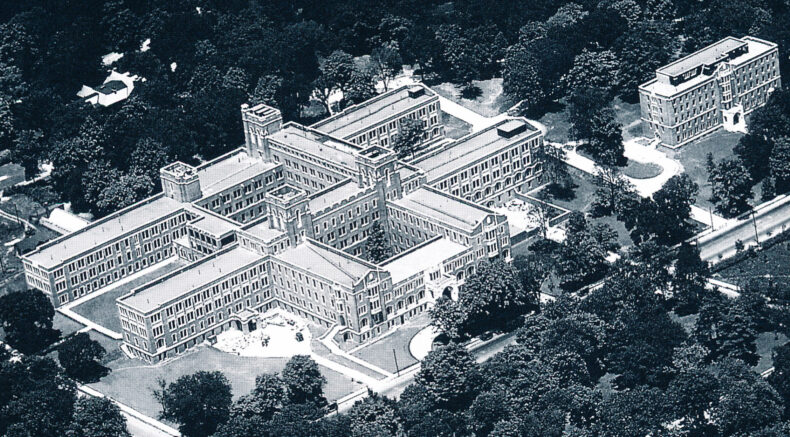
Robert “Bobby” Vantrease, an award-winning artist who retired in 2013 after 64 years at Vanderbilt University Medical Center (VUMC) died July 7. He was 89.
Mr. Vantrease, who retired as the longest-serving employee at the Medical Center, served as director of VUMC’s Medical Illustration department for 14 years as part of his astonishing longevity, which stretched from the presidencies of Harry Truman to Barack Obama, and saw VUMC grow from one building to its present complex of hospital, clinic and research structures.
Mr. Vantrease entered Vanderbilt University as an undergraduate in 1946 and studied biology in the College of Arts and Science. In 1948, he began working part-time in Vanderbilt’s Medical Illustration department, becoming a full-time employee in June 1949.
He was a Nashville native who lived most of his life within a few blocks of Vanderbilt, and, from an early age, loved to draw. When he was a young man beginning his career, he also knew that it never hurts for an artist to have a day job.
“I became interested in landscape painting around 1950,” he once said. “At the time I thought, ‘That’s what I want to do. Why work at Vanderbilt? I need to get out and paint.’
“But I was smart not to quit my job, because sales of art have never been the greatest way to make a living. So I channeled my interest into painting and drawing in my spare time, and I took every class and workshop I could find.”
He recalled that his starting salary was $37.50 a week, and that included working a half day on Saturdays.
Mr. Vantrease’s first boss at Vanderbilt was pioneering medical illustrator Susan Wilkes, who, under Dean Canby Robinson, had founded the Medical Illustration department in 1926. His final boss at Vanderbilt was Jill Austin, Chief Marketing Officer, who recalled his work ethic and sense of humor.
“Bobby was an energetic role model and beloved colleague for our entire team,” she said. “He was dedicated and hard-working with a delightful sense of humor. When the offer was made for a retirement buyout, Bobby—well into his 80s by then—could barely contain his glee when he pinned a button to his shirt that said ‘Should I take early retirement?’”
 One of Mr. Vantrease’s specialties was architectural renderings of buildings, including a popular pen-and-ink drawing of the medical school entrance. Over the years his work illustrated the covers of publications, was featured in brochures and recruiting materials, and sold on campus as prints and note cards. He was a member of the Tennessee Art League, the Tennessee Watercolor Society, the Pastel Society of America and Nashville Artist Guild.
One of Mr. Vantrease’s specialties was architectural renderings of buildings, including a popular pen-and-ink drawing of the medical school entrance. Over the years his work illustrated the covers of publications, was featured in brochures and recruiting materials, and sold on campus as prints and note cards. He was a member of the Tennessee Art League, the Tennessee Watercolor Society, the Pastel Society of America and Nashville Artist Guild.
“Painting and drawing were his love, his talent and his gift,” said Anne Rayner, a Vanderbilt photographer who worked alongside Mr. Vantrease for more than two decades. “His talent flowed onto the paper with such ease. I’m just lucky I got to see and share in his gifts. He was a true gentleman and friend.”
Until the advent of computer illustration software, much anatomical illustration, as well as graphs, diagrams, and schematics for research presentations and publications had to be drawn by hand. Mr. Vantrease also contributed many calligraphic or hand-decorated touches to certificates and other documents.
One of his early assignments was a hand-lettered rendering of the Oath of Hippocrates, a gift from the medical class of 1951 to the school.

That work, now yellowed around the edges with age, still hangs in a wood-and-glass case just inside the traditional entrance to the Vanderbilt School of Medicine in Medical Center North. In the curlicue decorative touches of its border, sharp-eyed observers can still pick out the inked signature of its then 24-year-old artist: “Robert M. Vantrease 1951.”
Visitation will be held at Woodlawn Roesch-Patton Funeral Home on Saturday, July 16, from 11 a.m. until 1 p.m., with a service at the funeral home to immediately follow.
Kara Furlong contributed to this story.

















